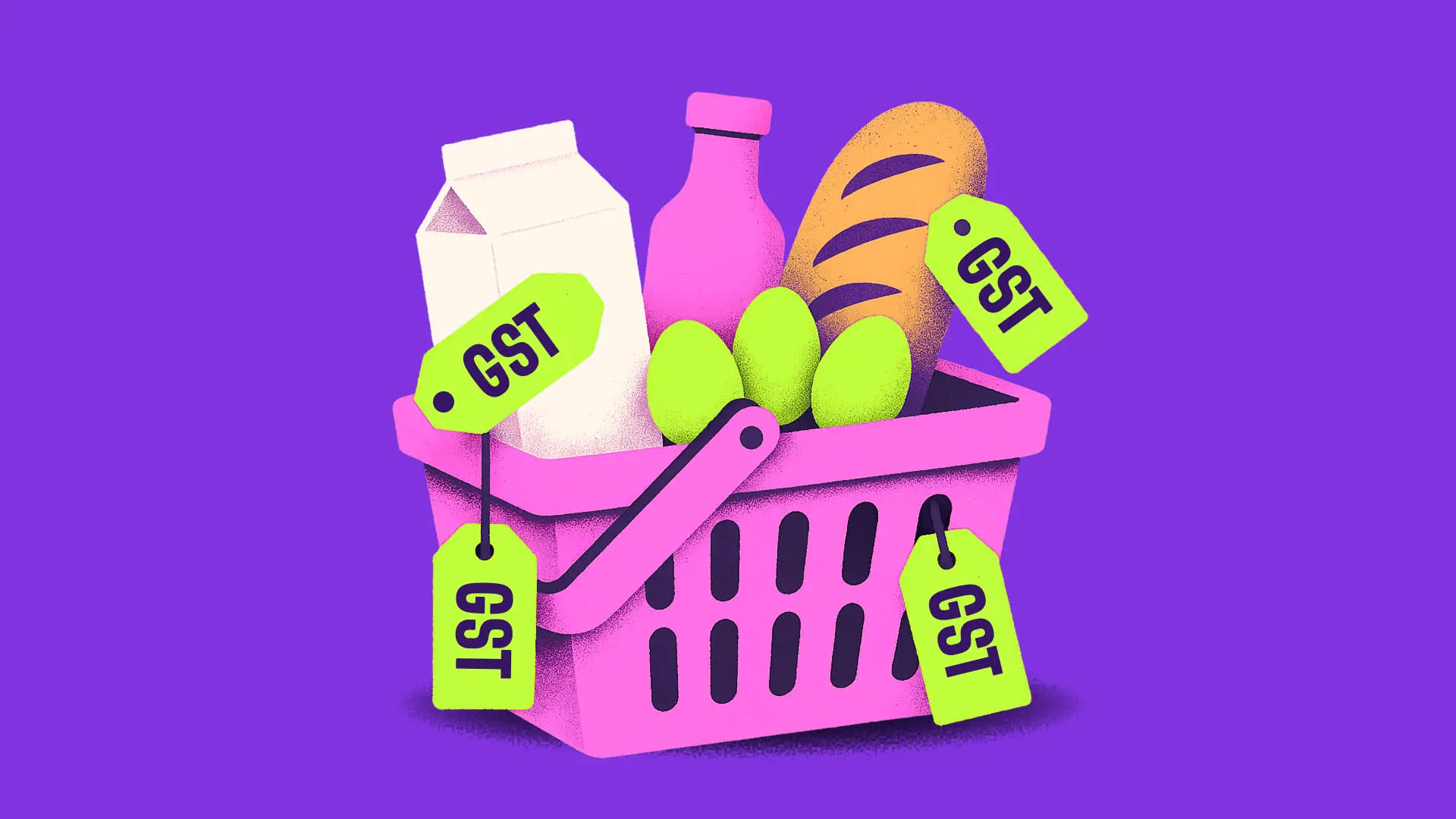Time to read : 5 Minutes
Ahhh the Goods and Services Tax, or GST… for those of us old enough to remember it was controversial back in 1998 when the Howard government introduced the concept as part of the election campaign. And while there was a lot of opposition (pardon the pun) from the Labor party and voters, the Howard administration narrowly won the election, and GST kicked in on 1 July, 2000.
Fast forward to today and the GST is back under the spotlight. There’s a proposal by Federal Member for Curtin, Kate Chaney MP who is advocating for tax reforms.
Chaney’s proposal includes:
Increasing GST from 10% to 15%.
Extending GST to other areas such as food, health, education and childcare – to name a few.
Offering a $3,300 annual “basics rebate” to help lower income earners.
Chaney says these changes would reduce personal income tax and improve the budget. So let’s take a closer look at what’s being proposed, what it could mean, but first a quick recap on GST.
What is the GST and which items are GST-free?
The GST is a 10% tax that’s added to most items you buy or services you use in Australia. But there are some exceptions where GST doesn’t apply.
According to the ATO, GST is not added to:
basic food or grocery items such as fruit, vegies, meat, fish and eggs
medical and health care services when a Medicare benefit is payable
some educational services provided by schools, universities and TAFE
select government charges such as car rego and passport fees.
What are the proposed changes to GST?
The proposed changes have been led by independent MP Kate Chaney and supported by high-profile economist Richard Holden. They’re pushing for an increase to the tax, to 15% – but they want to go beyond the hike. They’re talking about removing some of the current GST-free exemptions.
So what this could mean is that you would start paying GST – at 15% – on groceries, private health care, private education, childcare and utilities. It would impact every Aussie to some extent.
But before you start sweating, this proposal faces political hurdles as the current Labor government is not in favour of the changes.
So why is a change to GST being proposed?
According to the numbers published by the Organisation for Economic Co-operation and Development (OECD), Australia has a lower GST rate (or consumption tax) than a lot of other countries that charge a similar tax. Our neighbours in New Zealand already pay 15% GST, while over in the UK they have VAT at 20%.
Chaney has said the Australian government relies more on getting money from income tax, so increasing the GST can help improve the budget.
The proposal says increasing and widening the tax would help boost the federal government’s revenue by up to $92.5 billion in the first year.
But forking out more money at the checkout or on essential bills is going to sting, especially for low- to middle-income earners. So, there’s another part to the proposal… all Aussies aged 18 and over would receive a yearly payment of about $3,300 to help ease the extra tax on everyday items.
Called the “basics rebate”, it would help offset the higher prices from the GST increase for the first $22,000 spent each year.
Be aware: as a rebate, you would still be expected to pay GST at the checkout. The payment would come later as compensation, possibly in a lump sum.
Here are a couple of scenarios.
Imogen, a single mum working part-time, spends less than $22,000 a year on goods and services. She would receive the basics rebate and would not be out-of-pocket. As a low-income earner, it’s a win for Imogen.
Henrietta, a high income earner, spends $50,000 a year on a huge range of goods and services. She would pay extra GST on anything over that first $22,000. But… as a high income earner, it’s believed her income could absorb the difference.
What does this mean for businesses?
If the proposed GST reforms go ahead, many businesses that are currently GST-exempt – like childcare providers, private schools and some health service providers – would need to register if their turnover exceeds the ATO’s thresholds.
These businesses would have to get familiar with new reporting rules, handle potential price changes, and make sure they stay compliant – which could be rather taxing!
This would mean:
accurately collecting GST from customers
managing extra paperwork and admin
keeping a closer eye on cash flow
budgeting for extra operational costs.
Bottom line
Talk of a GST increase has stirred mixed feelings among Aussies..
Some worry it would make life harder for lower income earners who already spend a big chunk of money on everyday essentials. But others are warming up to the idea of receiving a $3,300 yearly payment to balance it out.
Then there are those who doubt any change will happen soon, with the Labor government currently not supporting the proposal to increase GST.
So, where to from here? The proposal was a hot topic at the federal government’s economic roundtable in Canberra, August 19-21. But... we’ll just have to wait and see where it lands.
Go deeper:
Here’s how to set yourself up for a bigger tax refund... yes it's above-board
Would you like to work a four-day week with no change to your pay?
